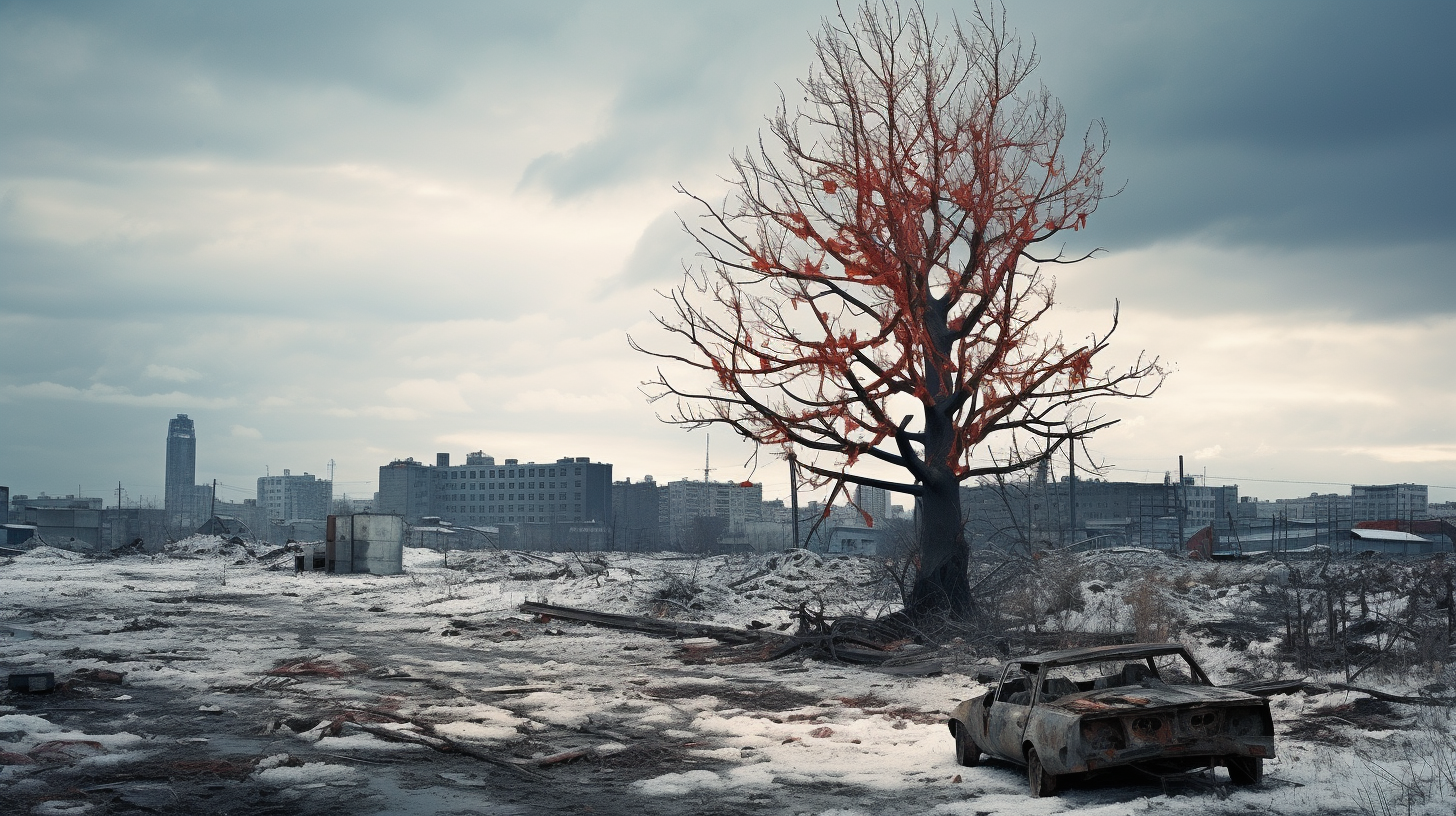In a world that once flourished with the predictable ebb and flow of four distinct seasons, we now find ourselves immersed in the insipid continuity of environmental sameness. The rich tapestry of spring blooms, vibrant summer days, the crisp breath of autumn, and the silent chill of winter—these are merely echoes in the annals of our collective memory, as we bid adieu to the variability that once graced our planet.
‘Farewell to Seasons, The Climate’s Monotony’ paints a bleak portrait of a present day where the symphony of nature has fallen into a somber silence. No longer does the return of the cherry blossoms herald the joys of spring, nor do falling leaves signal the arrival of Halloween’s pumpkins. Instead, earth’s climate has plateaued into a dismal and repetitive ostinato of weather patterns.
Our world has steeped into a singular, relentless season. A never-ending cycle of environmental doldrums relentlessly blurs the once-clear lines between what was winter, spring, summer, and fall. Extreme weather events, once considered anomalous, have become the norm, disrupting ecosystems, economies, and the very fabric of society.
The phenomena that we have begrudgingly grown accustomed to—a perpetual haze of pollution casting its pall over city skylines, the relentless rise of global temperatures, the silent death of biodiversity—these are symptoms of a planet in distress. One where seasonal markers are erased, giving rise to swathes of barren lands where forests once thrived, and oceans eerily quiet, as marine life succumbs to the warming waters.
Expert climatologists are stymied by the sheer scale of transformation. With algorithms and models rendered obsolete by the erratic behavior of the climate, they struggle to predict the next catastrophe. ‘The earth has slipped into a pattern of persistent unpredictability, where once-guarded secrets of seasonal changes are now part of an ancient mystical lore,’ one scientist laments.
The loss of seasons also signals the demise of cultural traditions tethered to seasonal milestones. Harvest festivals, winter solstices, and midsummer celebrations have lost their place in time, becoming relics of an age where the environment danced to the rhythm of the sun’s annual journey. Humanity’s connection to the natural world—once grounded in the reliable passage of time—now floats aimlessly in a sea of monotony.
As we continue to peruse the relentless sameness that now defines our existence, one cannot help but reflect on the forewarnings that went unheeded. Had action been taken, perhaps the tale unfolding in the present day could have been vastly different. While entertaining the thought of reversing the damage is an exercise in futility, understanding the gravity of our situation is paramount.
While fiction often speaks of the end times as a period of dramatic upheaval, our reality sneers at such notions, presenting us with an end not with a bang, but a drawn-out whimper—a gradual decay that nullifies the beauty of change, punishing the very essence of hope.
In the absence of the melodic seasons, we trudge forward in a world that has succumbed to a gray stillness, echoing the silence of a future we once had the power to mold. So, here we stand, bemoaning the loss of what was once a celebration of life’s cyclic beauty, and facing the consequences of our choices. For in the grand scheme, it was not just the climate that fell into monotony, but our will to change, to preserve, and to cherish the delicate balances of our planet.
